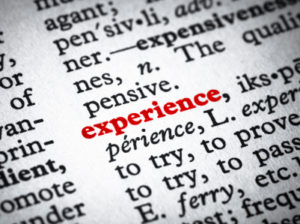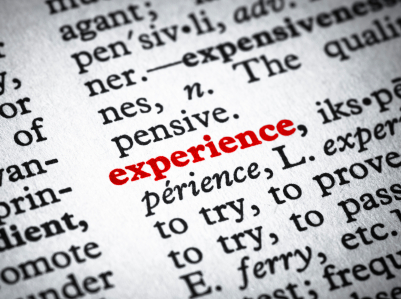As I traveled home from yet another conference last week, I reflected back on the many conversations I had with talent leaders and vendors and how they formed a common theme. For years we have been talking about employee engagement and its value, but the drive to create a more holistic approach has expanded the conversation to encompass the employee experience. This concept is a natural extension of other similar terms that we’re all familiar with: the candidate experience and the customer experience.
 Why does this even matter? I’ve always said that employees treat customers like their company treats them. And that isn’t just my take. Data shows that happier employees lead to happier customers and better business outcomes.
Why does this even matter? I’ve always said that employees treat customers like their company treats them. And that isn’t just my take. Data shows that happier employees lead to happier customers and better business outcomes.
In addition, the data from our Modern Measures of Success in Talent Acquisition study says the candidate experience is the most important initiative for companies within their overall talent acquisition strategy. All of this points to an increasing focus on an experience-driven workplace.
Defining the Employee Experience
The employee experience expands beyond the compensation, benefits, and rewards structure. It’s more than culture. It also encompasses elements such as workplace technology, workplace design, and how communication flows within the organization.
Because companies are the same, for the most part, I have been waiting to see this concept take root in the mindset of talent leaders and solution providers everywhere. When you think about it, it is a logical conclusion to the changes shaping the workplace over recent years. As basic technology, benefits, and leadership become increasingly similar over time, the experience we shape around an employee becomes a key differentiator for the company.
It’s an extension of the brand and culture, because it reflects how we think about people and what we value. But it also wraps around the everyday experiences of an employee, ultimately creating a model that drives engagement and employee satisfaction levels.
To begin wrapping your arms around the topic, here are some questions that might be worth exploring:
- Is your technology simple, intuitive and easy to use for employees?
- Does the design of your workplace demonstrate your commitment to building the right organizational culture?
- Is your organizational chart aligned with the kind of culture you want to create?
- Do employees have access to high quality technology and tools to collaborate, connect, and get work done?
The technological aspect can tie into any part of the employee lifecycle. I recently learned of a company that replaced its talent acquisition technology platform because it was clunky and ugly. The talent leader told me that she was embarrassed for the highly skilled candidates to apply through the platform because it was a poor reflection on the firm. For a technology company that is trying to hire the smartest tech folks on the market, the hiring process should not be managed by a technology that looks like it was developed in 2003.
This is one example of many of how companies are looking at this concept in a new light. Every single interaction with employees, whether through technology or not, shapes how they view the organization. Every. Single. One.
All of the data points to an increasing focus on an experience-driven workplace.
The Big Picture View
Companies, more than ever, are looking for a unified view of their talent. Instead of examining discrete pieces of the talent, learning, and HR processes, firms are starting to identify correlations and tie disparate practices together. How does your hiring and selection affect your training program outcomes? What impact does succession have on talent acquisition planning?
In a similar vein, through the discussion of the employee experience, we are trying to tie together seemingly disparate elements of employment to demonstrate a broader, interconnected picture of the environment surrounding an employee. This is a high level look at how pieces interrelate, and it offers a strategic opportunity to get talent aligned with the business goals.
Several years ago I spoke with a workforce technology firm at HR Tech about one of their customers. The customer, a legal firm, was having trouble keeping its 25-40 year old male population because of the working hours. Many employees worked fifty or more hours a week, and that age bracket is when people normally start settling down and building families. Instead of chalking it up as a loss and moving on, the company created a paternity leave policy that allowed employees to take up to a year off with a new baby, protecting their job and giving them a place to return once they were ready. It became very popular, very quickly, and it stemmed the flow of talent out of the organization. It then began to be a source of incoming talent, because it appealed to others outside the firm that were looking for some stability during those early years of putting a family together. The firm was using something as simple as paid leave as a strategic differentiator in the marketplace to appeal to talent that other organizations were having trouble keeping.
This is a simple example, but it demonstrates how culture, benefits, and the way we look for solutions to issues all tie into the ultimate employee experience. Delivering a high-quality employee experience is a key opportunity to engage talent and create a long-term relationship with your high performers. Are you ready to start defining yours?

Ben Eubanks is the Chief Research Officer at Lighthouse Research & Advisory. He is an author, speaker, and researcher with a passion for telling stories and making complex topics easy to understand.
His latest book Talent Scarcity answers the question every business leader has asked in recent years: “Where are all the people, and how do we get them back to work?” It shares practical and strategic recruiting and retention ideas and case studies for every employer.
His first book, Artificial Intelligence for HR, is the world’s most-cited resource on AI applications for hiring, development, and employee experience.
Ben has more than 10 years of experience both as an HR/recruiting executive as well as a researcher on workplace topics. His work is practical, relevant, and valued by practitioners from F100 firms to SMB organizations across the globe.
He has spoken to tens of thousands of HR professionals across the globe and enjoys sharing about technology, talent practices, and more. His speaking credits include the SHRM Annual Conference, Seminarium International, PeopleMatters Dubai and India, and over 100 other notable events.

